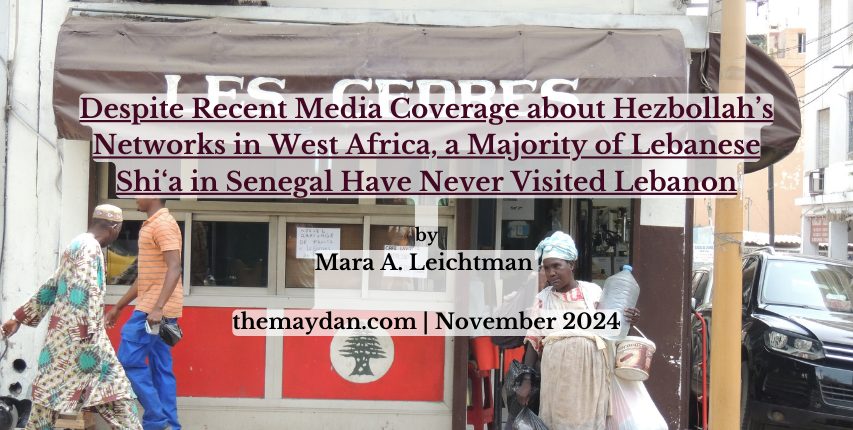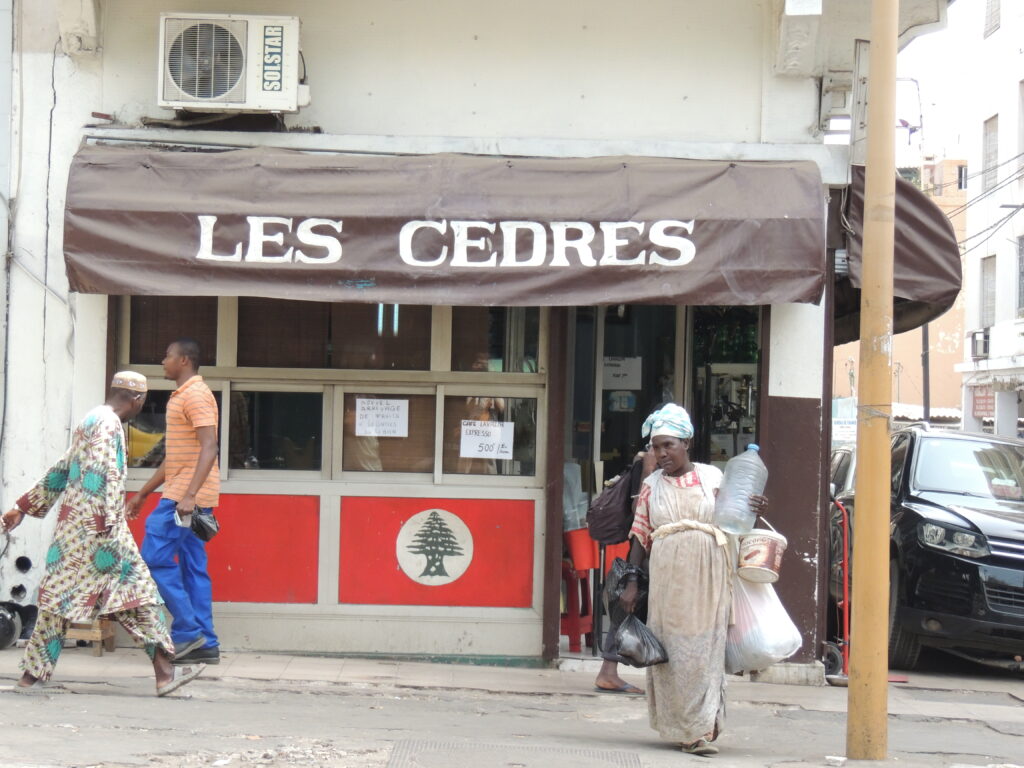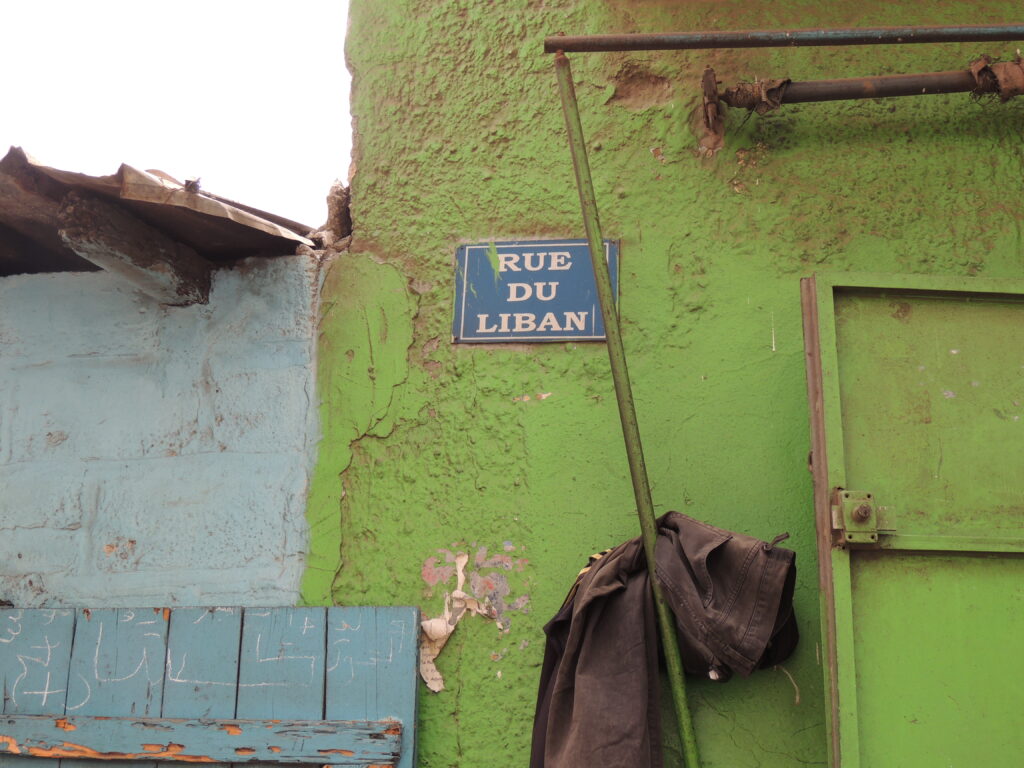
The killing of Hezbollah’s top leader Hassan Nasrallah on September 27, following an Israeli airstrike against the southern suburbs of Beirut, has led to renewed media attention on the Lebanese diaspora in Africa. Lebanese began to migrate to West Africa in the nineteenth century, long before Hezbollah came into existence in 1982.
The French television network TV5Monde recently broadcast an interview suggesting that Lebanese Shi‘a first arrived in West Africa in the 1980s at the same time Hezbollah was formed in Lebanon. While this might be the case for a small number of individuals, it is important to shed light on the history of this established diaspora community and to evaluate harmful generalizations that overstate illicit economic activities.

An article in Le Monde last month also implied that West Africa was at the heart of Hezbollah’s financing through money laundering. These claims can be traced to a 2011 lawsuit where US officials accused a Lebanese-Canadian bank of using the American banking system to launder drug-trafficking profits from South America through West Africa to Lebanon. This resulted in a $102 million settlement in 2013, subsequent sanctions against four Lebanese citizens in various West African countries, and additional sanctions in 2018.
To be clear, I cannot shed light on these allegations. Yet as a scholar who authored a book about Lebanese Shi‘a in Senegal and who has lived among the community, I will describe how a majority of Lebanese in Africa are disconnected from Lebanon. Although they remain culturally and emotionally attached to the homeland, many do not hold Lebanese citizenship and have never even visited Lebanon.
“A majority of Lebanese in Africa are disconnected from Lebanon. Although they remain culturally and emotionally attached to the homeland, many do not hold Lebanese citizenship and have never even visited Lebanon.”
This article traces the history of Lebanese migration to West Africa, focusing on how diaspora identities change over time in response to war and other traumatic events. Lebanese in Senegal are more aware of what is happening in Lebanon today than in the past. Some are sympathetic towards Hezbollah’s advocacy for the long-disenfranchised Lebanese Shi‘a; yet this does not mean the entire diaspora community is complicit in “terrorism.” Moreover, migrant remittances from Africa are an important source of development funds that can assist in Lebanon’s reconstruction.
A Brief History of Lebanese Migration to Africa
The Lebanese constitute one of the oldest and most widespread modern diasporas. Migrants and refugees left Levantine villages in the late nineteenth and early twentieth century to escape poverty and political strife. Different historical periods in Lebanon contributed to various waves of migration: Ottoman rule (1516-1918); French Mandate (1923-1946); independence (1943); Israeli and Syrian dominance.
“Some are sympathetic towards Hezbollah’s advocacy for the long-disenfranchised Lebanese Shi‘a; yet this does not mean the entire diaspora community is complicit in ‘terrorism’ and involved in illicit economic activities.”
Lebanese migrated to all five continents, but first arrived in West Africa as early as the 1880s, which later intensified during the 1920s. Marseilles was the transportation hub of the time. Emigrants planned to continue on to the Americas, where there had been previous Lebanese immigration. However, many arrived by boat in Dakar or other West African ports and found work as intermediaries in the French colonial peanut trade or textile industry.
Lebanese settlement in Senegal was first patterned by temporary migration with the intention of returning to Lebanon to retire and reinstate children in the country of origin. Yet economic opportunities kept many Lebanese in Africa, and later conflict in Lebanon eliminated the possibility of return. Earlier generations claimed multiple nationalities. Some were in possession of a variety of passports from Senegal, Lebanon, France, and/or other African or Western countries. These represented hybrid identities and provided a safeguard if times got tough.
Over time, Lebanese formed a diaspora in Senegal in response to colonial and post-colonial pressures. They became embedded in Senegalese society, building social, economic and political ties. Nevertheless, French colonial anti-Lebanese campaigns and Senegalese independence in 1960 created periods of insecurity. Some Lebanese were required to revoke their original nationalities in order to apply for Senegalese citizenship and keep their businesses after independence. As I argue in my book, this precarity led to the (re)invention of Lebanese identity in the diaspora as an ethnic minority.
Diasporic Identity Formation
My research shows how Lebanese transitioned into becoming a diaspora in Senegal. In contrast to Lebanon, religion ceased to divide Muslims and Christians in Senegal and instead became a shared element of Lebanese diasporic culture. There was not a second wave of immigration to Senegal during the fifteen-year Lebanese Civil War (1975-1990) as there was to Ivory Coast that reinforced community tensions. This means that Lebanese in Senegal were primarily second, third, and now fourth and fifth generation migrants.
Lebanese pride themselves on having contributed to the development of West Africa. The older generations even refer to themselves as pioneers of the land. They are fluent in local languages. Many are businessmen, who own shops, cafes, and are influential in certain industry sectors (plastic, paper, cosmetics). Others work in a variety of professions (medicine, law, pharmacy, mechanics).

There are roughly 25,000 Lebanese in Senegal today. While Senegal is a majority Sunni Muslim country, 95 percent of the Lebanese community in contemporary Senegal are Shi‘a. There is also a small Christian population and an even smaller Sunni Muslim presence. Muslim and Christian demographics were more evenly balanced in the first generation. Over the years, Lebanese Christians were more likely to leave Senegal while Muslim families reproduced at a higher rate.
Lebanese in Senegal eventually developed a national ethnicity they never shared in Lebanon by downplaying their strong religious identities. Interreligious marriages became more frequent and children of different religions studied together in schools. All Lebanese community members celebrated weddings, funerals, and even religious holidays together in mosques and churches. Religious institutions represented the minority community as a whole, regardless of denomination.
In this way, Lebanese in Senegal witnessed the Lebanese Civil War (1975-1990) from a distance. During that period, a majority of Lebanese Muslims did not distinguish between Sunni and Shi‘a denominations; only when some visited Lebanon were they confronted with religious differences.
Twenty-First Century Transnational Tensions
Still, the 33-day July 2006 Lebanon War resulted in some Lebanese Shi‘a in Senegal (re)newing their transnational attachments to Lebanon. For the very first time, Lebanese in Senegal organized a demonstration in Dakar displaying solidarity with their homeland. As I argued, responses to the war were particularly significant because a majority of the Lebanese diaspora had never visited Lebanon. Shi‘i Islam began to stand for Lebanese nationalism as traumatic political events led to a shift in diasporic identification, even among an established diaspora community long detached from their country of origin.
Lebanese Shi‘a in Senegal and throughout West Africa will be similarly impacted by Israel’s most recent war with Hezbollah. Some are sympathetic towards Hezbollah’s fierce advocacy for their historically disenfranchised community and provision of important social services. They organized another march through Dakar on October 19 protesting the destruction of Lebanon and Gaza and calling for a ceasefire. But this does not mean that all Lebanese Shi‘a in West Africa are “terrorists” entangled in criminal activities on the continent.
Other recent tensions in Lebanon have likewise resonated with the Lebanese diaspora, including in Senegal. These range from Hezbollah’s involvement in the Syrian civil war since 2012; Lebanon’s ongoing political and financial crises; the 2019 anti-government protests that united Lebanese across religious sect and social class; and the tragic 2020 explosion in Beirut’s port.
As I maintained in a recent chapter, analysis of current dynamics in Lebanon should not ignore the role of transnationalism and the Lebanese diaspora. Migrant remittances from Africa have crucially aided in the reconstruction of war-torn Lebanon and the development of villages of origin. While many of the younger generation are unfamiliar with Lebanon, in my earlier interviews with older generations of Lebanese in Senegal, some proudly described their contributions to their homeland. Some supported extended family back in Lebanon and built houses, community institutions, and/or important infrastructural developments (such as electricity infrastructure). Others invested in transnational business and opened up new economic opportunities. The Lebanese government has long been aware of the importance of its Lebanese diasporas, and the Ministry of Foreign Affairs and Emigrants is also responsible for fostering relations with these communities worldwide. There are even street signs in southern Lebanon named “Senegal” or “Nigeria.”
“Moreover, migrant remittances from Africa are an important source of development funds that can assist in Lebanon’s reconstruction.”
The devastation in Lebanon has reached new heights today. Neighborhoods are once again destroyed. One quarter of the population has fled their homes – a number of displaced that is increasing daily. To escape this catastrophic situation, Lebanese will continue to emigrate. Many have already fled across the border to Syria; others will move to West Africa. Senegal repatriated its citizens from Lebanon on October 19, who were even met at the Dakar airport by President Bassirou Diomaye Faye. Throughout history, Lebanese have tapped into global networks as they sought a more stable future for their families and slowly tried to rebuild their lives in the diaspora.

